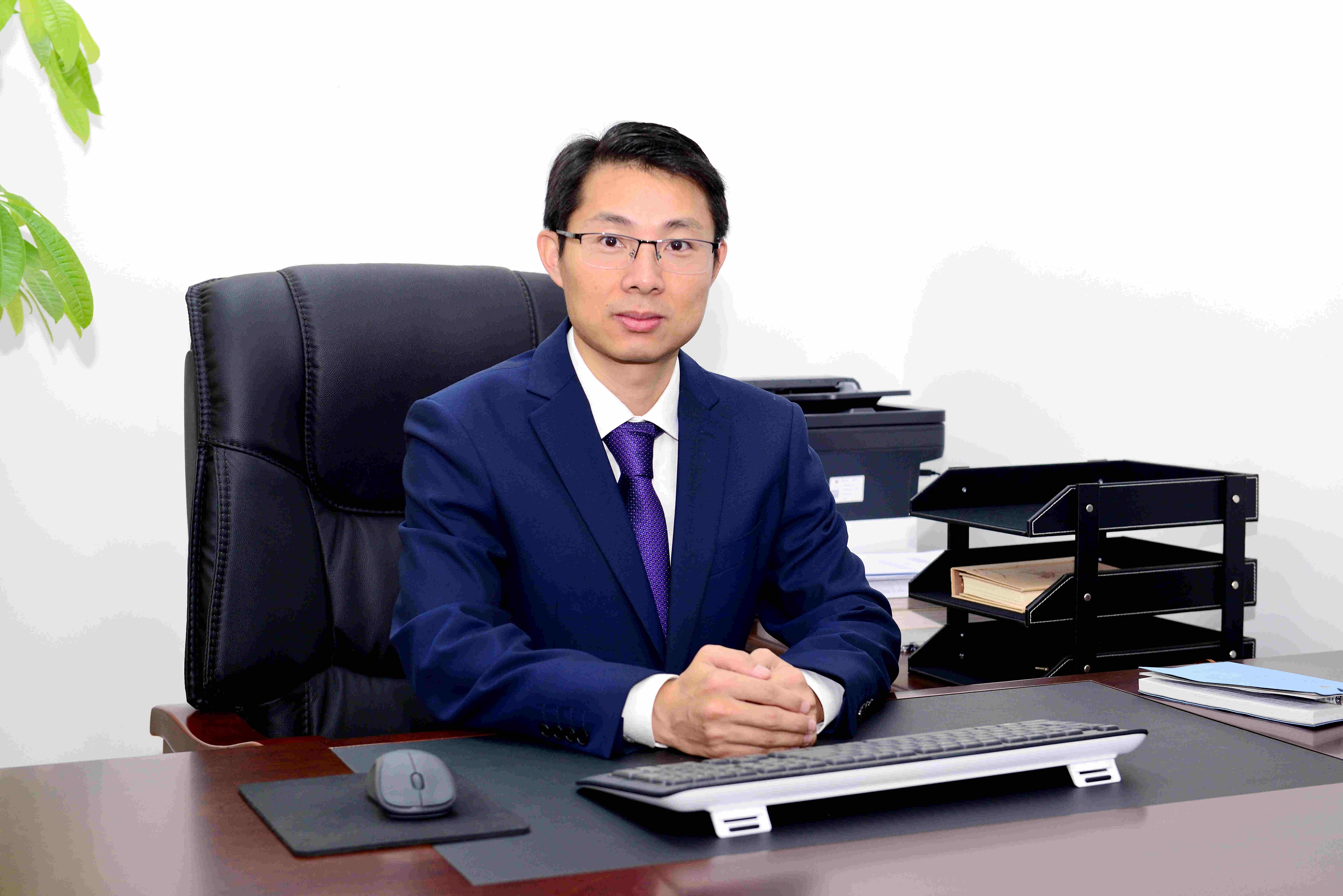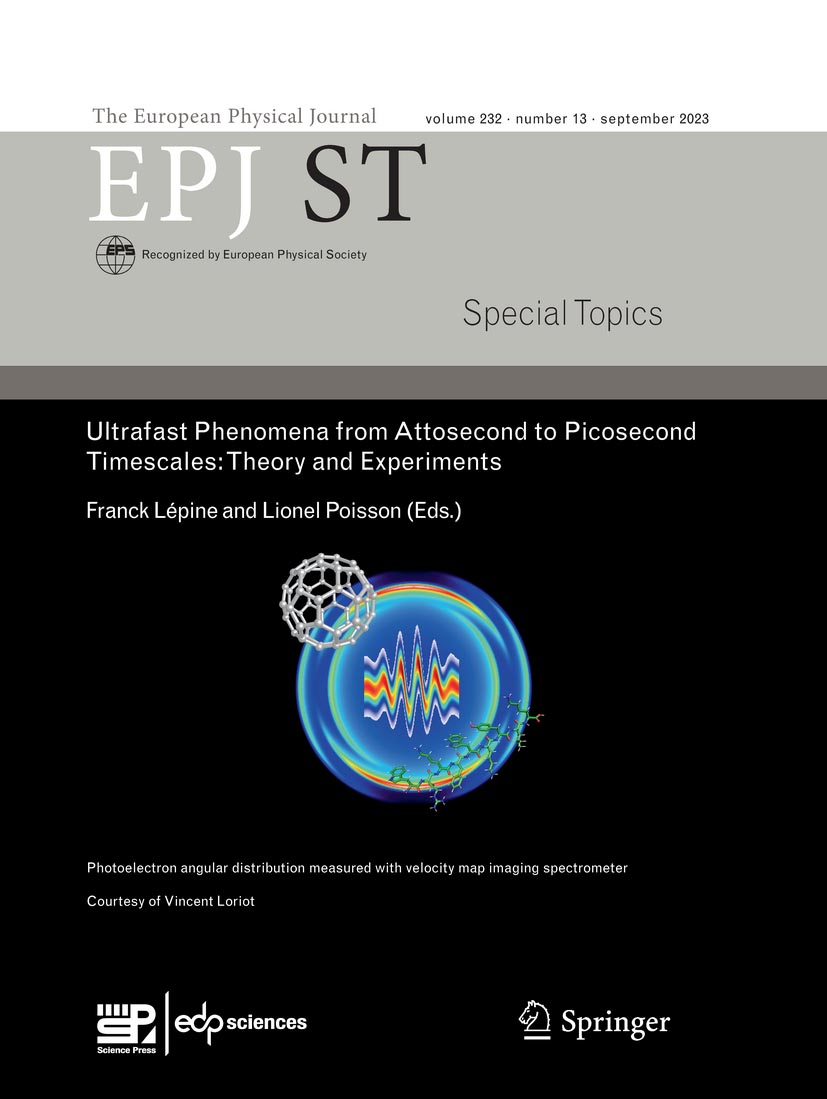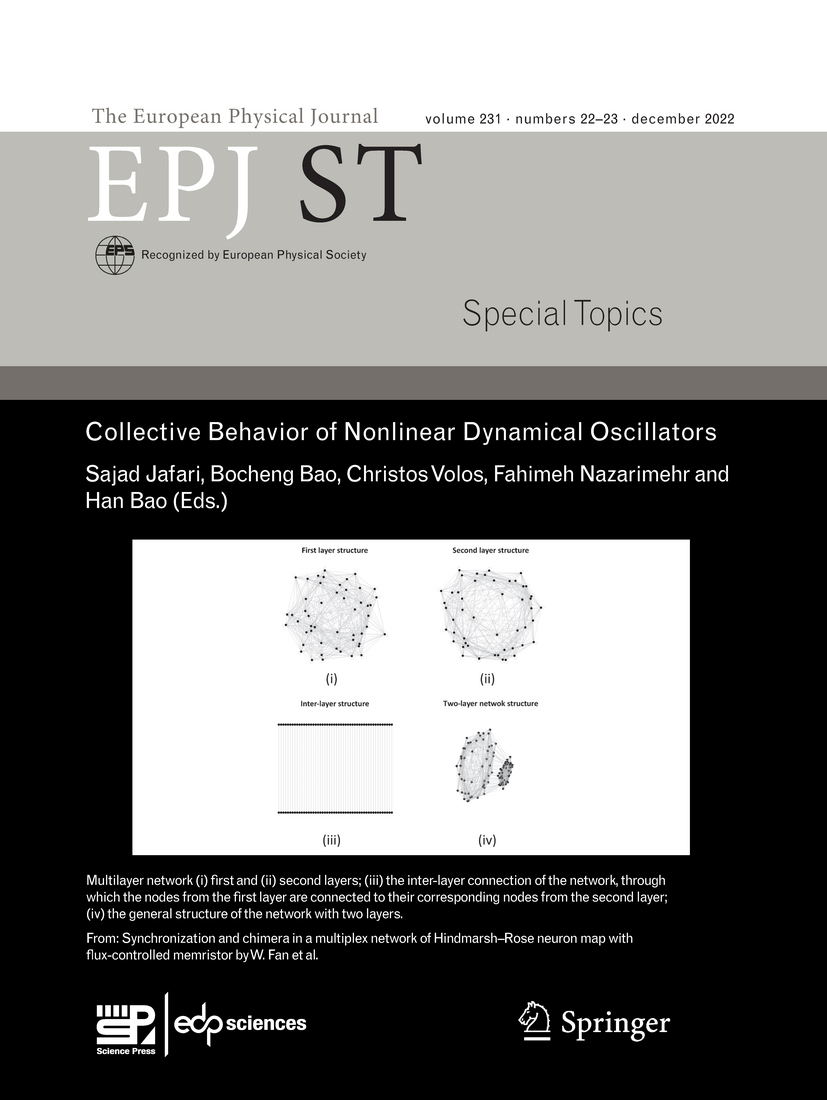EPJ ST: Filippos Sofos new Editor on board
- Details
- Published on 10 June 2024

The publishers of The European Physical Journal Special Topics are pleased to announce the appointment of Dr Filippos Sofos as new Editor in the board.
Dr. FILIPPOS SOFOS is an Assistant Professor in Computational Condensed Matter Physics, at the Department of Physics, University of Thessaly, GR. He studied Electrical and Computer Engineering at the Democritus University of Thrace, GR, where he also obtained his MSc in Microelectronics and Digital Systems, and received his PhD from the Civil Engineering Department, University of Thessaly, GR. The topic of his PhD Thesis was related to the investigation of flows at the nano/micro-scale with the Molecular Dynamics method.
His research interests focus on the application of innovative machine learning methods in physical sciences, big data analysis, deep learning and super resolution, genetic programming, as well as numerical simulation methods in fluid mechanics and materials, multiscale modeling, nanofluidics, and computational Hydraulics. In these directions, he has published more than 100 journal and conference proceedings papers.
EPJ ST: Jingting Luo new Editor on board
- Details
- Published on 13 May 2024

The publishers of The European Physical Journal Special Topics are pleased to announce the appointment of Professor Jingting Luo as new Editor in the board.
Jingting Luo received the Ph.D. degree from Tsinghua University, Beijing, China, in 2012.
He worked as an Academic Visitor with the Faculty of Engineering and Environment, Northumbria University, Newcastle upon Tyne, U.K., in 2016.
Since 2012, he has been working as a Researcher with Shenzhen University, Shenzhen, China, where he is currently a Professor with the College of Physics and Optoelectronic Engineering. He is the Director of Shenzhen Key Laboratory of Advanced Thin Films and Applications.
He has published over 150 science citation index (SCI) journal articles and more than 20 high cited articles. He has extensive experience in thin film materials and devices, including optoelectronics thin film and solar cells, thermoelectric thin film and devices, smart thin films, biomedical microdevices, lab-on-chip, MEMS, sensors and microfluidics.
EPJ ST Highlight - CompactLight: Designing a Cost-Effective XFEL Facility
- Details
- Published on 10 April 2024

An international group of experts has produced a design for a free electron X-ray laser facility that is significantly smaller and cheaper than those that are currently in use.
Very many advances in structural science since the 1970s were made by probing materials with synchrotron radiation: that is, high energy X-rays generated through accelerating high-energy electrons. The latest generation of such sources, X-ray free electron lasers (XFEL) are far more powerful than their predecessors, but are only accessible to international consortia and a few rich countries because of their high cost. Now, an international group of experts have prepared a design for a more compact and cost-effective XFEL system, accessible to small countries and, perhaps, some individual laboratories. The design is published in EPJ Special Topics (EPJ ST).
EPJ ST Highlight - An exciting era for ultrafast science in France
- Details
- Published on 15 December 2023

Progress across five scientific topics currently being investigated by the French scientific network on ultrafast phenomena highlight both a rapid pace of discovery and emerging new directions of research.
From biochemistry to quantum mechanics, ultrafast phenomena can be found across a broad array of scientific fields. Now the subject of a rapidly expanding area of research, they describe how matter behaves over timescales ranging from picoseconds (thousandths of a nanosecond), down to attoseconds (billionths of a nanosecond).
Today, ultrafast processes are studied by a global community of scientists, who are dedicated to understanding the inner workings of matter, and exploring how they can be controlled and exploited for novel applications. In 2023, three researchers were awarded the Nobel Prize in Physics for their contribution to attosecond laser technology: clearly emphasising the growing relevance of the field.
EPJ ST Highlight - Capturing the evolution of complex quantum systems
- Details
- Published on 09 August 2023

Through a new survey, researchers show how mathematical representations named ‘tensor trains’ can help to capture and simulate the dynamics of evolving quantum systems across a range of different scenarios.
Many quantum systems are heavily influenced by their surrounding environments, making them incredibly challenging to describe theoretically. To capture the dynamics and evolution of these systems, researchers often use mathematical representations named ‘tensor trains’. Through new research published in EPJ ST, a team of researchers from four different institutions in France show how tensor trains can be implemented to describe and simulate quantum systems.
EPJ ST Highlight - Many-body interactions feel the heat: Introducing thermal field theory
- Details
- Published on 01 August 2023

Thermal field theory seeks to explain many-body dynamics at non-zero temperatures not considered in conventional quantum field theory.
Quantum field theory is a framework used by physicists to describe a wide range of phenomena in particle physics and is an effective tool to deal with complicated many-body problems or interacting systems.
Conventional quantum field theory describes systems and interactions at zero temperature and zero chemical potential, and interactions in the real world certainly do occur at non-zero temperatures. That means scientists are keen to discover what effects may arise as a result of non-zero temperature and what new phenomena could arise due to a thermal background. In order to understand this, physicists turn to a recipe for quantum field theory in a thermal background — thermal field theory.
In a new paper in EPJ ST, Munshi G. Mustafa, Senior Professor at the Saha Institute of Nuclear Physics, Kolkata, India, introduces a thermal field theory in a simple way weaving together the details of its mathematical framework and its application.
EPJ ST Highlight - Investigating the Ising model with magnetisation
- Details
- Published on 27 July 2023

Researchers have explored the evolution of systems of interacting spins, as they transition from random to orderly alignments. Through new simulations, they show that this evolution can be investigated by measuring the changing strength of the system’s magnetism.
The Ising model describes systems of interacting atomic spins relaxing from a ‘paramagnetic’ state – whose spins point in random directions, to a ‘ferromagnetic’ state – whose spins spontaneously align with each other. So far, the nonequilibrium dynamics of this transition has been studied by measuring the growth of regions, or ‘domains’ of aligned spins. In new research published in EPJ ST, researchers led by Wolfhard Janke at the University of Leipzig, Germany, show how this can be done far more easily by measuring the strength of the system’s magnetisation. The team’s discovery could help researchers to better understand the atomic-scale interactions underlying many different phenomena in nature: from electrostatic forces, to neuroscience and economics.
EPJ ST issue: Trends in Recurrence Analysis of Dynamical Systems
- Details
- Published on 08 March 2023

More than a decade has passed since the publication of the special issue “20 Years of Recurrence Plots: Perspectives for a Multi-purpose Tool of Nonlinear Data Analysis” in the European Physical Journal—Special Topics (EPJST). The hope for further developments inspired by the interesting contributions in this special issue was fully realized. We see an amazing development in the field of recurrence plots (RPs), recurrence quantification analysis (RQA), and recurrence networks. Recurrence analysis is not just one method; it has emerged as an entire framework with many extensions, special recurrence definitions, and specifically designed methods and tools. It has found spreading applications in diverse and growing scientific fields. Recurrence analysis has become a widely accepted concept, even referred to in studies that are actually not using it as a method, but rather using it as a reference or alternative tool. It continues to be an active area of research and development today. An attempt to provide an overview of the most significant technical developments of this recurrence-plot-based framework in the past decade is included in this special issue.
All articles are available here and are freely accessible until 8 May 2023. For further information read the Editorial by Norbert Marwan, Charles L. Webber & Andrzej Rysak ”Trends in recurrence analysis of dynamical systems” Eur. Phys. J. Spec. Top. 232, 1–3 (2023). https://doi.org/10.1140/epjs/s11734-023-00766-z.
EPJ ST Highlight - Tracking how magnetism affects animal behaviour
- Details
- Published on 23 February 2023

We still know little about how animal behaviour changes in response to magnetic fields. A new review provides a tutorial introduction to the study of this fascinating and potentially useful phenomenon.
For over 50 years, scientists have observed that the behaviour of a wide variety of animals can be influenced by the Earth’s magnetic field. However, despite decades of research, the exact nature of this ‘magnetic sense’ remains elusive. Will Schneider and Richard Holland from Bangor University in Wales and their co-worker Oliver Lindecke from the Institute for Biology, Oldenburg, Germany have now written a comprehensive overview of this cross-disciplinary field, with an emphasis on the methodology involved. This work is now published in EPJ ST.
EPJ ST issue: Collective behavior of nonlinear dynamical oscillators
- Details
- Published on 16 January 2023

This topical issue collects contributions of recent achievements and scientific progress related to the collective behavior of nonlinear dynamical oscillators. The individual papers focus on different questions of present-day interest in this topic.
All articles are available here and are freely accessible until 16 March 2023. For further information read the Editorial by Sajad Jafari, Bocheng Bao, Christos Volos, Fahimeh Nazarimehr & Han Bao ”Collective behavior of nonlinear dynamical oscillators” Eur. Phys. J. Spec. Top. 231, 3957–3960 (2022). https://doi.org/10.1140/epjs/s11734-022-00725-0





